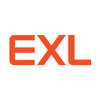Filter interviews by
Reynold Infotek Interview Questions and Answers for Experienced
Reynold Infotek Interview Experiences for Experienced
1 interview found

(1 Question)
- Q1. All related vto screening
(1 Question)
- Q1. Related to technical
Top trending discussions






Interview questions from similar companies

I applied via Naukri.com and was interviewed in Dec 2020. There was 1 interview round.
Interview Questionnaire
1 Question
- Q1. What is Company payroll Process
- Ans.
Company payroll process is the system used to manage employee compensation and benefits.
Payroll process includes calculating employee salaries, taxes, and deductions
It also involves managing employee benefits such as health insurance and retirement plans
Payroll process can be done in-house or outsourced to a third-party provider
It is important to ensure compliance with labor laws and regulations
Payroll process can be a...
Interview Preparation Tips

I applied via Naukri.com and was interviewed before Nov 2020. There was 1 interview round.
Interview Questionnaire
2 Questions
- Q1. Coding parts, tricky
- Q2. Not answered
Interview Preparation Tips

I applied via Campus Placement and was interviewed before Jan 2021. There were 4 interview rounds.
Interview Questionnaire
1 Question
- Q1. Knowledge of C language and JAVA
Interview Preparation Tips

Senior Software Engineer Interview Questions & Answers
Hexaware Technologiesposted on 29 Jan 2021
I applied via Naukri.com and was interviewed in Jul 2020. There were 4 interview rounds.
Interview Questionnaire
1 Question
- Q1. Java 8, J2EE, Spring, SQL
Interview Preparation Tips
All the best

I applied via Naukri.com and was interviewed before Sep 2019. There were 6 interview rounds.
Interview Questionnaire
3 Questions
- Q1. IQ Test
- Q2. Machine Test
- Q3. Face To Face
Interview Preparation Tips
1. IQ Test
2. Machine Test
3. Face to Face
IQ Test is not so tough but prepare well Machine Test
Machine Test Question are like :-
Q.1 - We declare a variable in C++ like "is_this_a_variable" and in Java like "IsThisAVariable". There is underscore in between every word and first alphabet of every word is in lowercase in C++ and in Java first alphabet is in capital without underscore. Create a program in which if user input a string in a C++ variable format it will convert the input in java variable format.
Q2. Count the frequency of a string.
user input string - pqhphi
output-
p - 2
q - 1
h - 2
i - 1
Be strong in algorithms and data structure.

I appeared for an interview in Jul 2017.
Interview Questionnaire
3 Questions
- Q1. Tell me about yourself?
- Ans.
I am a data analyst with a strong background in statistics and programming.
I have a Bachelor's degree in Statistics and have completed several courses in programming languages like Python and SQL.
I have experience working with large datasets and conducting data analysis using statistical techniques.
I am proficient in data visualization tools like Tableau and have created interactive dashboards to present insights.
I hav...
- Q2. Why this company?
- Ans.
I am interested in this company because of its strong reputation in the data analytics industry and its commitment to innovation.
The company has a proven track record of success in the data analytics industry.
It has a strong reputation for delivering high-quality insights and solutions.
The company values innovation and encourages employees to think creatively.
There are opportunities for professional growth and developm...
- Q3. Why do you want to make a career in this field inspite being an engineer?
- Ans.
I am passionate about using data to solve complex problems and make informed decisions.
Data analysis allows me to apply my analytical skills and engineering background to extract valuable insights from data.
I enjoy working with numbers, statistics, and programming, which are all essential skills in the field of data analysis.
Data analysis offers a wide range of opportunities to work on diverse projects and industries, ...
Interview Preparation Tips
Experience: The written test consists of 2 sections. First section is of verbal reasoning which is very easy. And second section consists of data interpretation, quant questions.
Tips: Speed and accuracy are important in this test. Daily practicing of aptitude can get you through the exam.
Duration: 45 minutes
Total Questions: 40
Round: Technical + HR Interview
Experience: After entering the interview room, the first question asked to me was "Walk me through your CV ".After that, I was asked some puzzle questions, one math question and a case study question which was bit difficult. The interviewer was trying to make me stressed by picking one of my strengths and saying that he considers it as my weakness. He was not convinced with whatever I said but in order to overcome above stress be clam and cool. Say what you know without hesitation, be strong, and be yourself. Last but not the least, don't bluff because he will eventually figure it out, even if you bluff say it convincingly.
Tips: Be perfect about what you have written in your CV and just be yourself.
Round: HR Interview
Experience: HR round was very cool . Actually the panel was friendly with me. They asked some common HR questions. That's it about this round.
Tips: Be fluent and develop good communication skills.
College Name: NIT Bhopal

Interview Questionnaire
6 Questions
- Q1. Tell me about your project
- Ans.
Developed a web-based project management tool for a startup
Used React for the frontend and Node.js for the backend
Implemented user authentication and authorization using JWT
Integrated with third-party APIs such as Trello and Slack
Implemented real-time updates using WebSockets
Deployed on AWS using EC2 and RDS
- Q2. Write the idea or algorithm for d program of fibonacci series
- Q3. One question from your subject
- Q4. Introduce yourself
- Ans.
I am a software engineer with experience in developing web applications and mobile apps.
Proficient in programming languages such as Java, Python, and JavaScript
Skilled in using frameworks like React, Angular, and Spring Boot
Experienced in working with databases such as MySQL and MongoDB
Familiar with Agile development methodologies and DevOps practices
- Q5. If I give you a box full of pencils..in how many ways can you use it
- Q6. Do you have any question for me
Interview Preparation Tips
Experience: Time management is very important to clear the aptitude test. Besides this a lot of practice is also very important. This round is the major filteration round. Though each round is a major filteration round cuz NTT DATA is not a bulk recruiter like cts, infy etc. Almost 2-3 thousand students were there for this round from 6 different colleges and only 100 of them were selected.
Tips: Its better to start with the preparation from before and do consider the previous year placement papers available at indiabix. You can practice more n more. Apart from this you can go through the r.s aggarwal aptitude book also.
Round: Group Discussion
Experience: There were many panels and each panel had 10-12 students. The H.r first decided some other topic but when he asked wether everybody is aware of the topic ..there were few who didn't know about it. .so he picked up another topic. Fortunately he asked me to start with the discussion. Always try to be the one to break the ice.
Tips: The only key to crack this round is that yku should talk. You should definitely not confuse gd with debate. You should not argue or by any chance shouldn't sound arrogant.
Round: Technical Interview
Experience: They will definitely ask about your project so be thorough with that. Ntt data is a Japanese company . Though this is IT but it will ask from the subject of your own choice from people those who have a non IT background. After you get shortlisted in d gd they will give you a form to fill. Do fill that form without fail. If it is blank then even if u go to the hr round he will reject you.
Tips: Just be confident and always smile. Be careful on what you write in your resume cuz they can ask about anything based on your resume.
Round: HR Interview
Experience: This round was a cake walk. Just be confident and updated about the company. Do ask him a question if he asks you to do that.but make sure it shouldn't be vague or out of the picture.
Tips: Keep smiling and don't get nervous. If they ask you about location preferences, dun get firm at one place.try to be flexible.
General Tips: Donot loose hope at any cost. You never know when your moment is going to arrive. Do practice the aptitude as much as you can. Finally NTT DATA selected only 50 overall in wch 11 were from my college n i was lucky to be one of them. the offer letter was issued the same day and we were all venerated. Its just a game of confidence. All the best
Skill Tips: Try to add some co curricular activities and justify your role.
Skills: communication, technical knowledge, management skills, leadership
College Name: SATHYABAMA UNIVERSITY
Motivation: You will find the it companies mostly head quartered in U.S but this company is in Japan. Plus you have better opportunity and growth compared to other companies cuz its not a bulk recruiter.
Skills evaluated in this interview

Interview Questionnaire
2 Questions
- Q1. Java ( socket programming, OOPS, DS )
- Q2. Write about your dream
- Ans.
My dream is to build innovative software solutions that positively impact people's lives.
Developing cutting-edge technology
Creating user-friendly interfaces
Solving complex problems
Collaborating with talented individuals
Making a difference in society
Continuous learning and growth
Interview Preparation Tips
Experience: GRE givers , you can make it through this. Brush up your technical skills for the programming section.
Tips: GRE quant and verbal and quick review from tutorialspoint.com would do the trick.
Round: Group Discussion
Experience: I had fun. I won a few debate competitions in various technical symposiums so, It gave a good experience about being quiet at the right moment.
Tips: Turn to your GRAB-ON mode. Never miss any chance. Learn to know when to be quiet and when to talk in a GD. Try to bring down the heat If two participants are getting into a argumentative discussion.
Round: Stress Interview
Experience: It was really difficult. Exactly after the GD, we were asked to right an essay in a very less time and our capability to manage the stress was observed.
Tips: Be calm and write all that you know in a presentable way.
Round: Technical Interview
Experience: I did a project in my 3rd year which included few concepts on Socket programming which helped me a bit in this round. I answered confidently and I was put to a confidence test too to see how sure I was about the answer.
Tips: A quick review on the day of interview and involving in friendly discussion about programming languages before the test helps.
Round: HR Interview
Experience: I was asked few technical questions in this round and later moved on to the general logical questions. Questions like, cutting a bread into multiple slices, finding the corresponding switch among 3 switches for 3 bulbs in room were asked. Find the sum of 1-10 in 4 seconds was asked suddenly. Thanks to Arithmetic Progressions :P.
Tips: Use your logical ability to answer.
Skills: Java, C, Body Language, Mental ability, Confidence.
College Name: Malla Reddy Institute of Engineering & Technology ( MRIET )
Motivation: Ranked among the top 50 of the Fortune 500. Expanding organizations which include lot of opportunities.

I appeared for an interview in Mar 2017.
Interview Questionnaire
4 Questions
- Q1. Tell us about yourself
- Ans.
I am a highly motivated individual with a passion for learning and a strong work ethic.
I have a Bachelor's degree in Computer Science
I have completed several internships in software development
I am proficient in Java, Python, and C++
I am a quick learner and enjoy taking on new challenges
- Q2. What do you intend to do in this internship
- Ans.
I intend to gain practical experience in my field of study and contribute to the company's success.
Learn about the company's operations and culture
Assist with projects and tasks assigned by my supervisor
Collaborate with team members and offer innovative ideas
Improve my skills and knowledge in my field of study
- Q3. What are your strengths
- Ans.
My strengths include adaptability, problem-solving, and communication.
Adaptability: I am able to quickly adjust to new situations and environments.
Problem-solving: I enjoy finding creative solutions to complex problems.
Communication: I am able to effectively convey ideas and information to others.
- Q4. What are your plans for the future
- Ans.
I plan to continue learning and growing in my field while also exploring new opportunities for personal and professional development.
Pursue advanced education or certifications
Seek out mentorship and networking opportunities
Explore different industries and roles to broaden my skillset
Set specific goals and regularly evaluate progress
Remain adaptable and open to new challenges
Interview Preparation Tips
Experience: The company came to our college campus offering an internship at their Tokyo center. The students were shortlisted based on their academic performance.
The written aptitude test lasted for one hour and consisted of general questions on mathematics, logical reasoning, verbal ability along with a few basic programming questions.
Tips: The mathematics section was easy with simple questions on percents, profit and loss etc. analytical and logical reasoning was a bit tricky. Do brush up on basic concepts especially OOPs for the technical section.
Round: Technical Interview
Experience: This was a completely technical round. The main topics asked consisted of data structures, databases and algorithms. I was also asked in depth about my project topic.
Tips: know all the details about your project that you may have done earlier.
If you have done any internship before, then do explain about your role, responsibilities and technical skills that you have gained through it.
Keep brushing up on basics of data structures and databases.
Round: HR Interview
Experience: This was a HR interview. The HR head along with the Japanese RnD team(through video conferencing)interviewed me.
Tips: Do not panic and be true to yourself. Answer clearly and honestly.
College Name: MIT College Of Engineering
Reynold Infotek Interview FAQs
Tell us how to improve this page.
Overall Interview Experience Rating
based on 1 interview experience
Interview Questions from Similar Companies
Reynold Infotek Reviews and Ratings
based on 5 reviews
Rating in categories
|
Talent Acquisition Specialist
3
salaries
| ₹2 L/yr - ₹2.3 L/yr |
|
Lead Talent Acquisition
3
salaries
| ₹1.1 L/yr - ₹2.8 L/yr |

DXC Technology

Mphasis

EXL Service

Sutherland Global Services
- Home >
- Interviews >
- Reynold Infotek Interview Questions >
- Reynold Infotek Interview Questions for Experienced







